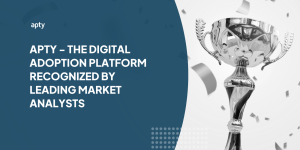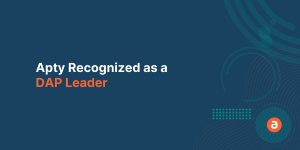CIOs are an integral part of any established and growing organization since the early 1980s. With the evolution of technology, their role has drastically changed.
Today the role of the CIO is not just limited to enabling businesses. They are strategic partners and play a vital role in decision-making and prepare the organization for digital disruption.
C-level executives and board-room directors look up to them to make the organization function smooth, productive, efficient, and highly effective.
They are expected to carry out technology transition within the organization, satisfy the business needs of the organization as well as the technical needs of employees, all while optimizing operations and increasing digital ROI.
How can a CIO balance all these responsibilities?
Following four steps can help CIO initiate a digital transformation in their organization.
1. Collaborate with stakeholders
The CIO has to align the latest technologies with C-suite executive’s aspirations. To achieve this CIO has to take a different approach.
- They must involve external service providers as business partners to plan and execute a smooth digital transition.
- Communicate the expectation of C-suite executives to the transformation team.
- Understand the concerns of employees and users to create a transformation optimized in line with their needs.
- Create a user-centric approach
2. CIOs must take a user-centric approach, here are few ways to ensure success.
- The transformation must be personalized and user experience should be the priority. The CIO must have a clear understanding of different job roles.
- Creating a roadmap where the transition should take in a collaborative manner rather than forced and pressurized way.
- Relevant digital adoption tools like Apty must be used to make the process of adopting cloud-based apps easy.
- Develop a communication strategy tailored to different roles and divisions.
- Automation should also be the priority as this helps to reduce the time spent on mundane tasks which usually creates irritation among users and hamper their productivity.
Just by prioritizing user the organization can make business processes faster, agile and better.
3. Communication across all levels
The job of CIOs is complex as they must communicate effectively the organizational objectives to the departmental managers and to the employees.
Establishing clear communication is important.
CIO should be able to translate the C-level executive aspirations to the departmental managers and further simplify it for each job function to have defined individual goals.
4. Measure, Scale, Improve, Implement & Repeat
Digital transformation is usually an overwhelming task for any organization.
There are many aspects that could make the transition a failure if long term vision is not adapted by the CIO.
The time invested in this process should be planned properly.
- The digital transformation must be segregated in small pilot projects. This would give a perspective on whether the adopted technologies could really have any positive impact on the whole organization.
- Analytics plays a big role in understanding the efficiency of any system and to know how the product is being used. Hence, the time must be spent in analyzing how the adopted software is performing in the pilot phase and should be measured to know how it’s being used by the users. This will help to improve the process and remove any impediments while scaling the solution at the enterprise level.
- Scaling must be done judiciously, once the digital transformation executed properly in small pilot projects it would not necessarily work well when scaled across the organization. This could be because the pilot project was heavily reliant on IT.
- Any digital transformation that heavily relies on IT cannot be executed successfully. Digital transformation should meet ever-changing business needs and should not be dependent on IT even for a small change in the long run.
- Once the digital business transformation is executed successfully in the pilot phase it must be executed across the organization in a phase-wise manner in order to make the process smooth, reliable and efficient.
Though digital transformation could be difficult to execute properly but when it’s done correctly could reap high rewards for the organization.
To instill digital transformation deep within an organization across all departments, CIOs must ensure collaboration,communication, proper implementation of user-friendly technology, and most important of all to measure and scale the adopted technology using digital adoption solution like Apty.













